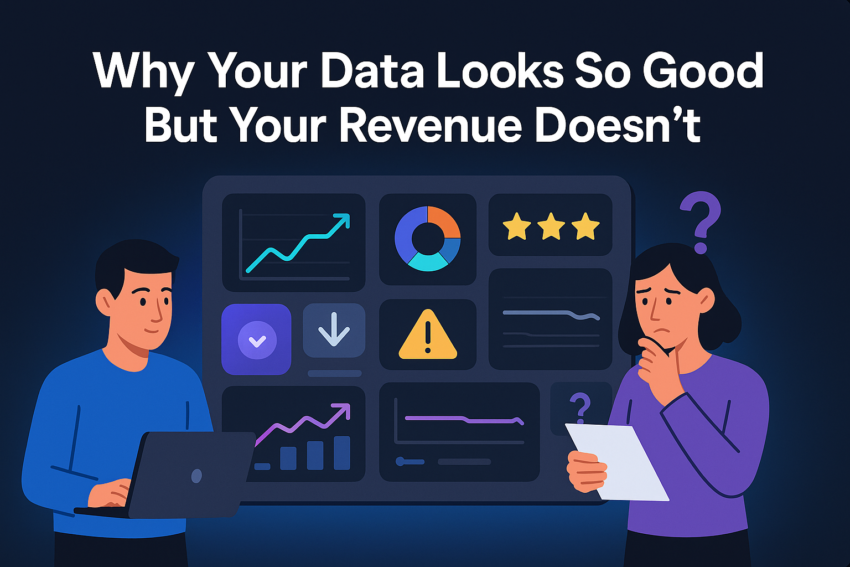The Real Value of Transparency: Why Owning Your Mistakes Wins Loyal Customers
Let’s be real for a second—mistakes happen. Whether it’s a missed deadline, a product recall, or that cringe-worthy typo in a major email campaign (been there, done that), no business is immune to errors. But here’s the silver lining: your mistakes don’t have to define your business. In fact, how you handle them can make you stronger, win you loyal customers, and even set you apart from the competition.
Transparency and accountability aren’t just buzzwords we toss around at Click Click Media; they’re part of our DNA. Owning your mistakes isn’t just good ethics—it’s good business. Let’s explore why.

Why Transparency Matters
Customers value honesty. A 2022 survey by Accenture found that 66% of consumers believe transparency is one of the most attractive qualities in a brand. And why wouldn’t they? Trust is the cornerstone of any relationship, whether it’s with your best mate or your broadband provider.
Now flip the script: when a business tries to hide or deflect blame, it’s like telling a kid the dog ate their homework. No one’s buying it. Social media and online reviews mean bad news spreads faster than a group chat with gossip. Customers can smell insincerity from a mile away. But if you own up to mistakes, you’re not just seen as human—you’re seen as someone who genuinely cares about making things right.
Real Talk: The Trust Equation
- Builds Trust: Customers are far more forgiving when they see you’re upfront and proactive.
- Enhances Loyalty: People remember how you made them feel during tough situations. Handled right, a mistake can actually strengthen relationships.
- Boosts Reputation: Businesses that handle mistakes with grace and accountability stand out in a sea of blame-shifters.
Transparency in the Australian Context
Australia’s cultural fabric is built on the values of mateship, fairness, and honesty. We’re a no-nonsense kind of people who value straight talk over spin. Whether it’s calling out a mate for a bad joke or expecting a business to fix an issue without a fuss, Australians appreciate transparency.
In fact, this cultural trait is so deeply ingrained that a lack of transparency can feel like a personal slight. For businesses operating in Australia, transparency isn’t just a nice-to-have; it’s a non-negotiable. Owning your mistakes shows you respect your customers and value their trust—a hallmark of Aussie values.
Consider the case of Woolworths’ controversial plastic bag policy changes in 2018. Initially, there was confusion and frustration among customers when single-use plastic bags were removed, followed by backlash when reusable bags were offered at a cost. Woolworths responded by openly addressing customer concerns, providing a transition period with free reusable bags, and communicating the long-term environmental goals behind the initiative. By being transparent and making adjustments, Woolworths managed to retain customer trust and eventually shift public perception positively.
The Psychological Power of Transparency
Transparency taps into powerful psychological principles. Let’s break it down:
1. The Reciprocity Effect
When you’re honest with customers, they’re more likely to respond in kind. It’s human nature. If a business admits fault and goes the extra mile to fix it, customers feel a sense of obligation to reciprocate that goodwill—often by sticking around.
2. Cognitive Dissonance
When businesses deny or deflect blame, it creates cognitive dissonance in customers. They know something’s off, and that disconnect erodes trust. Transparency, on the other hand, resolves this tension by aligning actions with words.
3. Loss Aversion
People are wired to avoid losses more than they seek gains. When businesses own up to mistakes, they mitigate the risk of losing customers who might otherwise feel betrayed. Transparency helps customers feel like they’re not being taken advantage of.
4. The Halo Effect
When customers perceive a business as transparent, that positive trait can influence their perception of the entire brand. Even a small act of honesty can amplify goodwill across the board.
The Benefits of Owning Your Mistakes
1. It’s a Credibility Booster
Nothing screams “we’re legit” like a business that can look a customer in the eye and say, “Yep, we stuffed up. Here’s how we’ll fix it.” Owning your mistakes shows integrity and accountability—qualities that build loyalty over time.
2. It Humanises Your Brand
Let’s face it: perfection is overrated (and impossible). When you’re transparent about your errors, you remind customers there are real humans behind the brand. People don’t expect you to be flawless; they expect you to be honest.
3. It’s a Free Masterclass in Improvement
Mistakes are feedback in disguise. They show you what’s broken so you can fix it. Think of them as expensive consultants—but without the PowerPoints.
Anecdote: The Click Click Media Approach
At Click Click Media, we once had a campaign that didn’t deliver the expected results. Instead of sweeping it under the rug, we called the client, explained what happened, and outlined a new strategy to course-correct. Not only did the client stick with us, but they also referred two new customers. Transparency turned a potential loss into a win.
How to Handle Mistakes the Right Way
When things go wrong, the way you respond can either escalate the situation or turn it into an opportunity. Here’s the playbook we use at Click Click Media:
1. Acknowledge the Problem
Don’t bury the lead. Be upfront and clear about what went wrong. Avoid vague language or deflecting blame.
Example: “We’ve identified an issue with [specific problem], and we take full responsibility.”
2. Apologise Sincerely
This isn’t the time for half-hearted “we’re sorry if you were offended” nonsense. A genuine apology goes a long way.
Example: “We’re deeply sorry for the inconvenience this has caused and appreciate your patience as we make things right.”
3. Provide a Solution
Outline clear steps to resolve the issue and prevent it from happening again.
Example: “We’re offering refunds/replacements and implementing [specific changes] to ensure this doesn’t happen in the future.”
4. Follow Up
Circle back with affected customers to ensure they’re satisfied with the resolution. This step often turns detractors into advocates.
Example: “We’d like to follow up to make sure you’re happy with the steps we’ve taken. Please let us know if there’s anything else we can do.”
Transparency in Action: How Click Click Media Walks the Talk
Transparency isn’t just a checkbox for us; it’s a cornerstone of our culture. Here’s how we live it every day:
1. Proactive Client Updates
Clients are never left in the dark. Regular updates—good or bad—help manage expectations and foster trust. If a campaign isn’t delivering, we’re upfront about it and pivot fast.
2. Internal Accountability
Mistakes are openly discussed within our team to identify root causes and implement solutions. This approach not only improves operations but ensures the same mistake doesn’t happen twice.
3. Open Feedback Channels
We actively encourage feedback from clients, using it as a tool for continuous improvement. It’s not always easy to hear, but it’s always worth it.
4. Clear Remediation Plans
When issues arise, we don’t just apologise—we outline exactly how we’ll make things right. This has been pivotal in achieving our 98% client retention rate.
Action Plan: Embracing Transparency in Your Business
Want to weave transparency into your own operations? Here’s how:
1. Create a Crisis Management Plan
Have a clear process in place for identifying and addressing mistakes quickly.
2. Train Your Team
Equip your staff with the skills and confidence to handle difficult conversations with customers.
3. Be Proactive
If you spot an issue, address it before customers have to bring it up.
4. Celebrate Transparency
Share examples of how your business has turned mistakes into opportunities to improve.
5. Learn and Adapt
Use mistakes as learning opportunities to strengthen your systems and prevent future issues.
Turning Mistakes Into Opportunities
Mistakes are inevitable, but they don’t have to be the end of the story. By embracing transparency, apologising sincerely, and taking meaningful steps to resolve issues, you can turn challenges into opportunities to build trust and loyalty.
At the end of the day, customers don’t expect perfection—they expect honesty. Own your mistakes, and you’ll not only recover but come back stronger. That’s not just good business; that’s great business.



